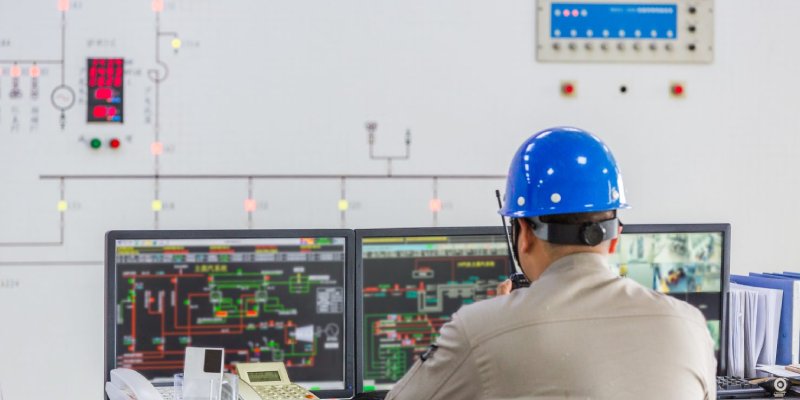
Unlocking Subsurface Insights with Electrical Resistivity Tomography (ERT) in the UAE
Electrical Resistivity Tomography (ERT) is a cutting-edge geophysical technique designed to provide detailed subsurface imaging for various applications, from environmental assessments to groundwater exploration and geotechnical investigations. At Smart Projects, we leverage ERT to accurately map underground features by measuring the electrical resistance of the soil and rock layers beneath the surface. Our expert team utilizes advanced ERT technology to deliver precise, non-invasive surveys, offering crucial data that supports informed decision-making for construction, environmental management, and resource exploration across the UAE. Explore how our ERT solutions can illuminate what lies beneath, ensuring a comprehensive understanding of your project site.
Our ERT Services
At Smart Projects, we offer a wide range of Electrical Resistivity Tomography (ERT) services that provide detailed subsurface insights for various applications. Our advanced ERT solutions are tailored to meet clients’ specific needs across the UAE, helping to ensure successful project outcomes through precise and noninvasive subsurface investigations.
Subsurface Mapping
Our ERT technology allows us to create high-resolution maps of underground structures, including different soil layers, rock formations, and voids. This information is crucial for construction and engineering projects, enabling accurate assessment of ground conditions and informing decisions about site suitability, excavation planning, and foundation design.
Environmental Site Assessments
We utilize ERT to detect and delineate subsurface contaminants, identify buried waste, and assess the impact of potential environmental hazards. Our surveys provide a clear picture of subsurface conditions, helping clients comply with environmental regulations and mitigate risks associated with contamination. They are essential for environmental site assessments and remediation planning.
Archaeological Surveys
ERT offers a non-invasive method for exploring and mapping archaeological sites. Our services help uncover buried artifacts, structures, and features without disturbing the site, preserving its integrity while providing valuable insights for heritage conservation efforts.
Infrastructure Assessment
We conduct ERT surveys to assess the subsurface conditions beneath existing infrastructure, such as roads, bridges, and pipelines. This helps identify potential issues like sinkholes, voids, or soil weaknesses that could compromise structural integrity, allowing for timely maintenance and repair planning to ensure long-term safety and stability.
Groundwater Exploration
ERT is a valuable tool in groundwater exploration, helping to locate aquifers and determine their depth, extent, and quality. Our surveys provide critical data that support sustainable water management practices, allowing clients to make informed decisions about groundwater extraction and usage while minimizing environmental impact.
Geotechnical Investigations
Our services are integral to geotechnical investigations, providing detailed information about soil and rock conditions beneath proposed construction sites. By analyzing the subsurface, we help identify potential issues such as weak soil zones, rock depth, or groundwater presence, enabling better foundation design and other structural elements.
Mineral Exploration
ERT is used in mineral exploration to identify and characterize subsurface mineral deposits. Our services aid in pinpointing resource-rich areas and assessing the size and quality of deposits, which is essential for efficient and cost-effective extraction planning in the mining industry.
Primary Purposes of ERT Surveys
Enhancing Project Planning and Safety
ERT surveys are crucial in the early stages of project planning, providing essential data on subsurface conditions. By mapping soil layers, rock formations, and potential voids, ERT helps identify geotechnical challenges before construction begins, reducing the risk of costly delays and ensuring safer project execution.
Environmental Protection and Compliance
ERT is invaluable for ecological assessments, offering a non-intrusive way to detect contamination and delineate pollution plumes. This capability is crucial for industries looking to comply with environmental regulations, manage waste responsibly, and plan remediation efforts that minimize ecological impact.
Optimizing Resource Extraction
ERT aids in exploring and evaluating mineral and natural resource deposits. By providing a detailed view of the subsurface, ERT helps identify the most promising areas for extraction, optimize resource utilization, and reduce exploration costs in the mining sector.
Supporting Sustainable Development
Ultimately, the purpose of ERT is to support sustainable development across various sectors. Whether enabling safe construction, preserving water resources, protecting the environment, or safeguarding cultural heritage, ERT provides data-driven insights to make responsible and informed decisions.
Water Resource Management
In regions like the UAE, where water is precious, ERT surveys significantly locate groundwater reserves. By identifying aquifers and assessing their extent and quality, ERT supports sustainable water management practices, aiding in developing reliable water extraction and conservation strategies.
Preservation of Cultural Heritage
In archaeology, the purpose of ERT extends to preserving cultural heritage by mapping buried artifacts and ancient structures. This non-invasive approach allows archaeologists to explore historical sites without disrupting the ground, thus protecting valuable cultural assets for future generations.
Infrastructure Stability and Longevity
ERT continuously monitors and maintains existing infrastructure. By detecting subsurface anomalies like voids or water ingress, ERT helps proactively manage infrastructure health, ensuring the longevity and safety of roads, bridges, and pipelines.

